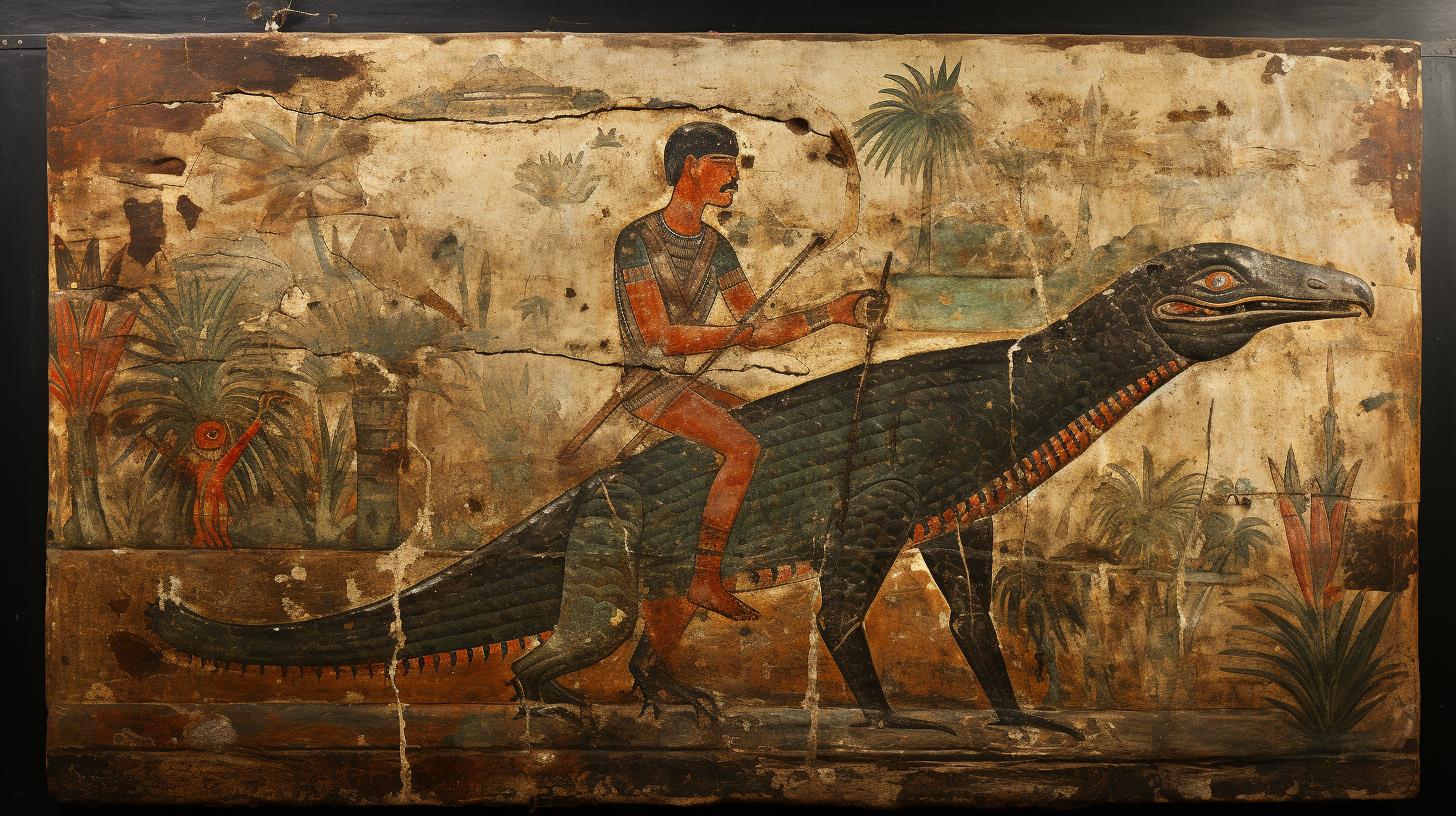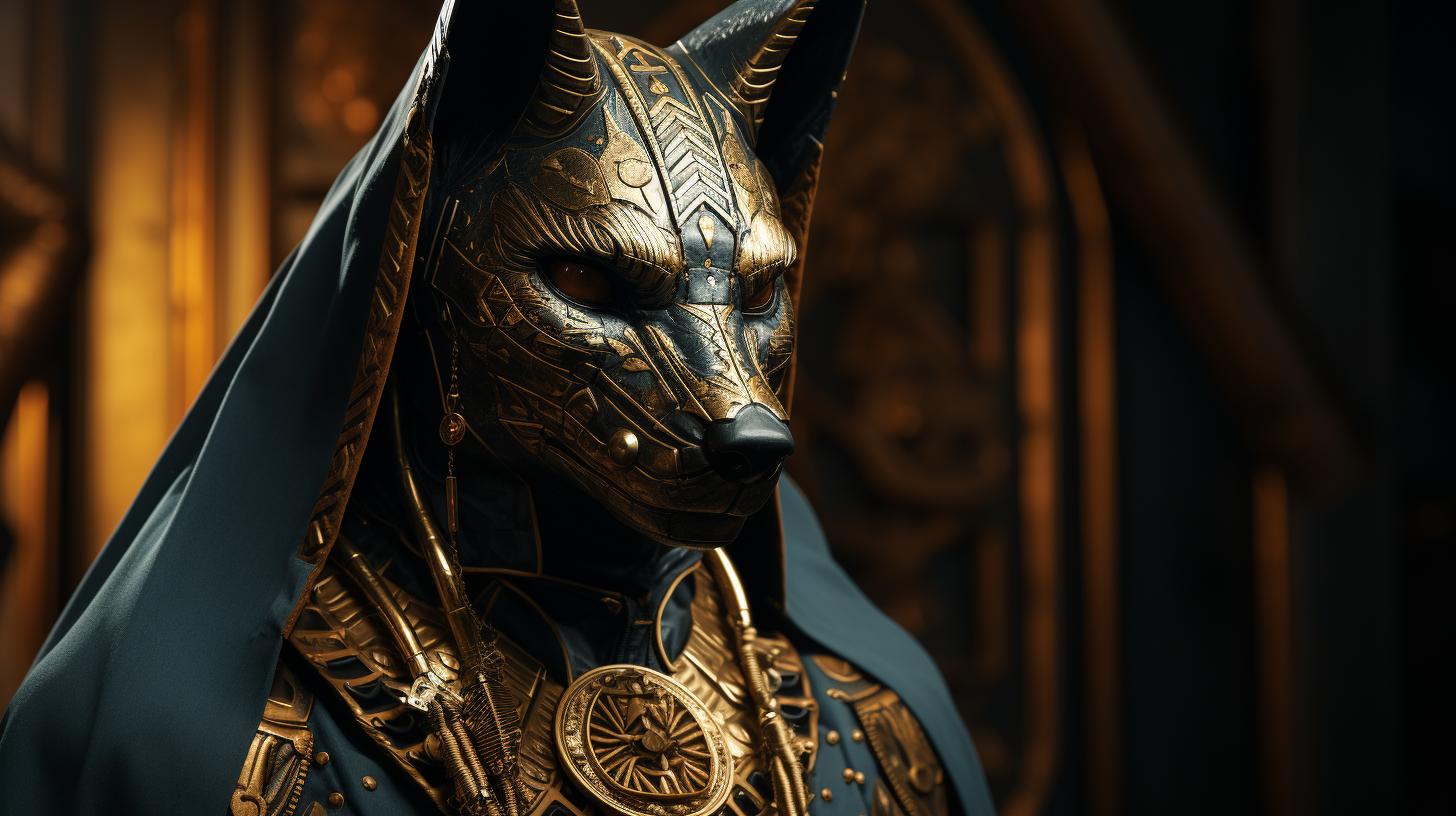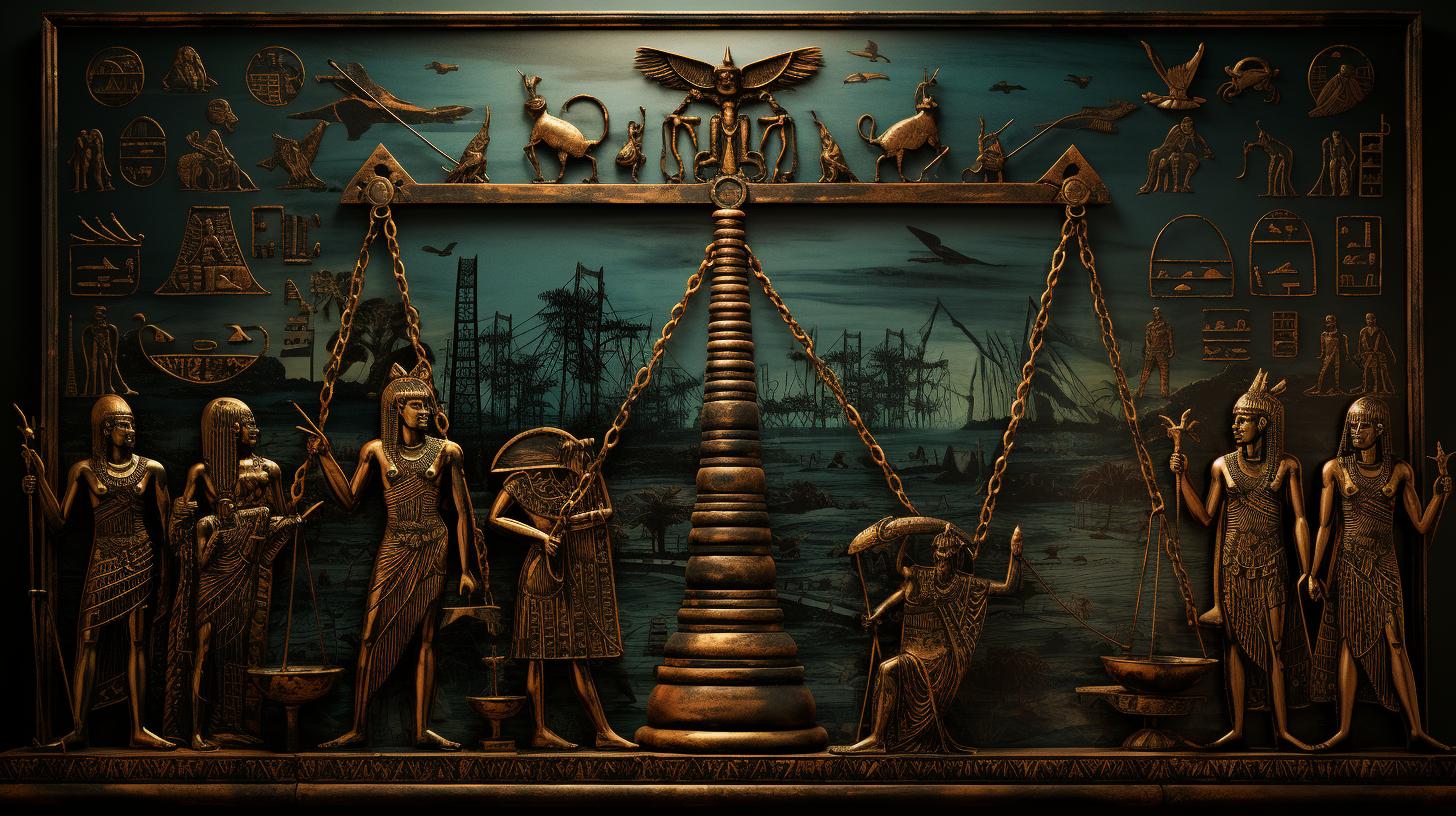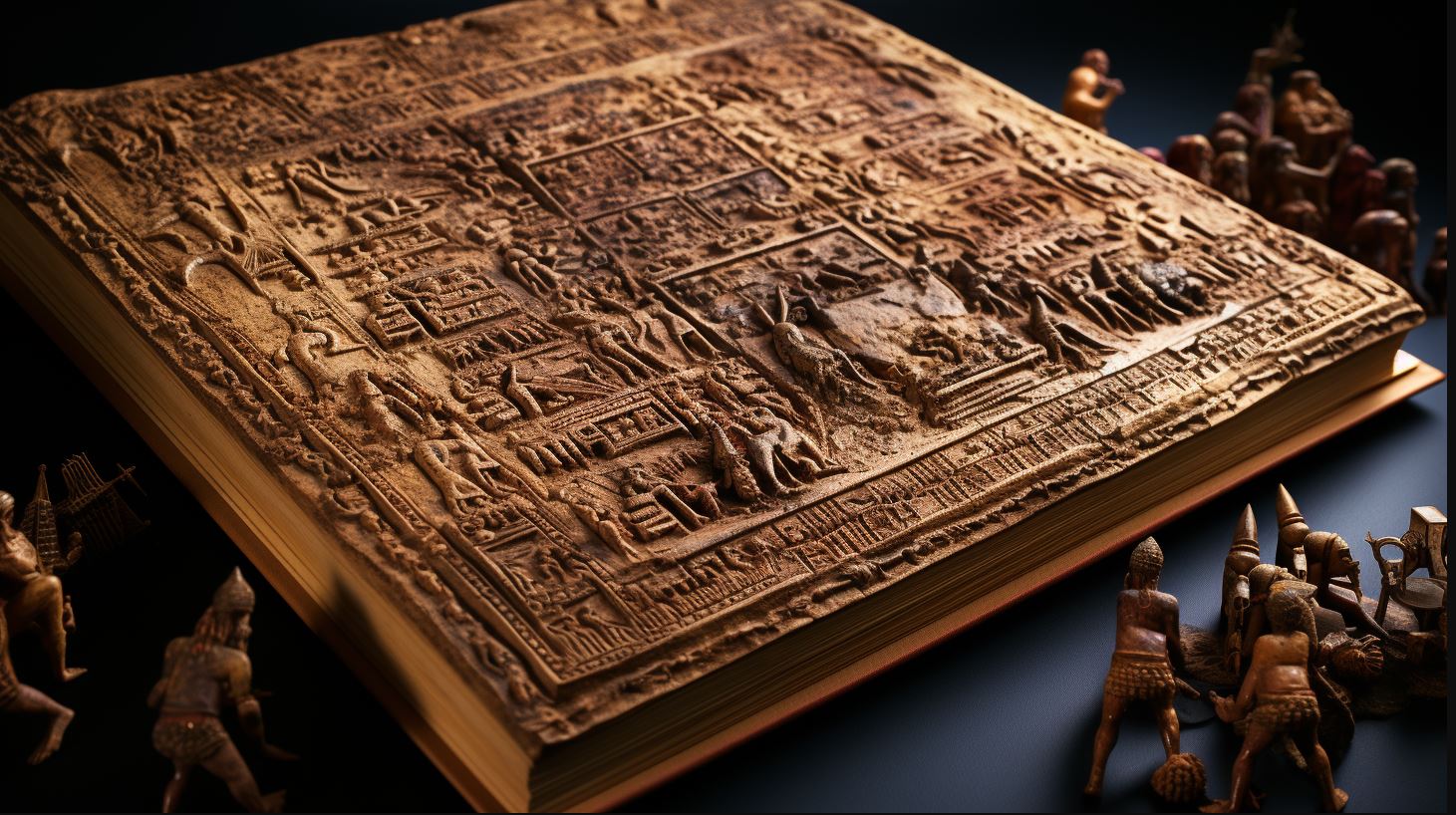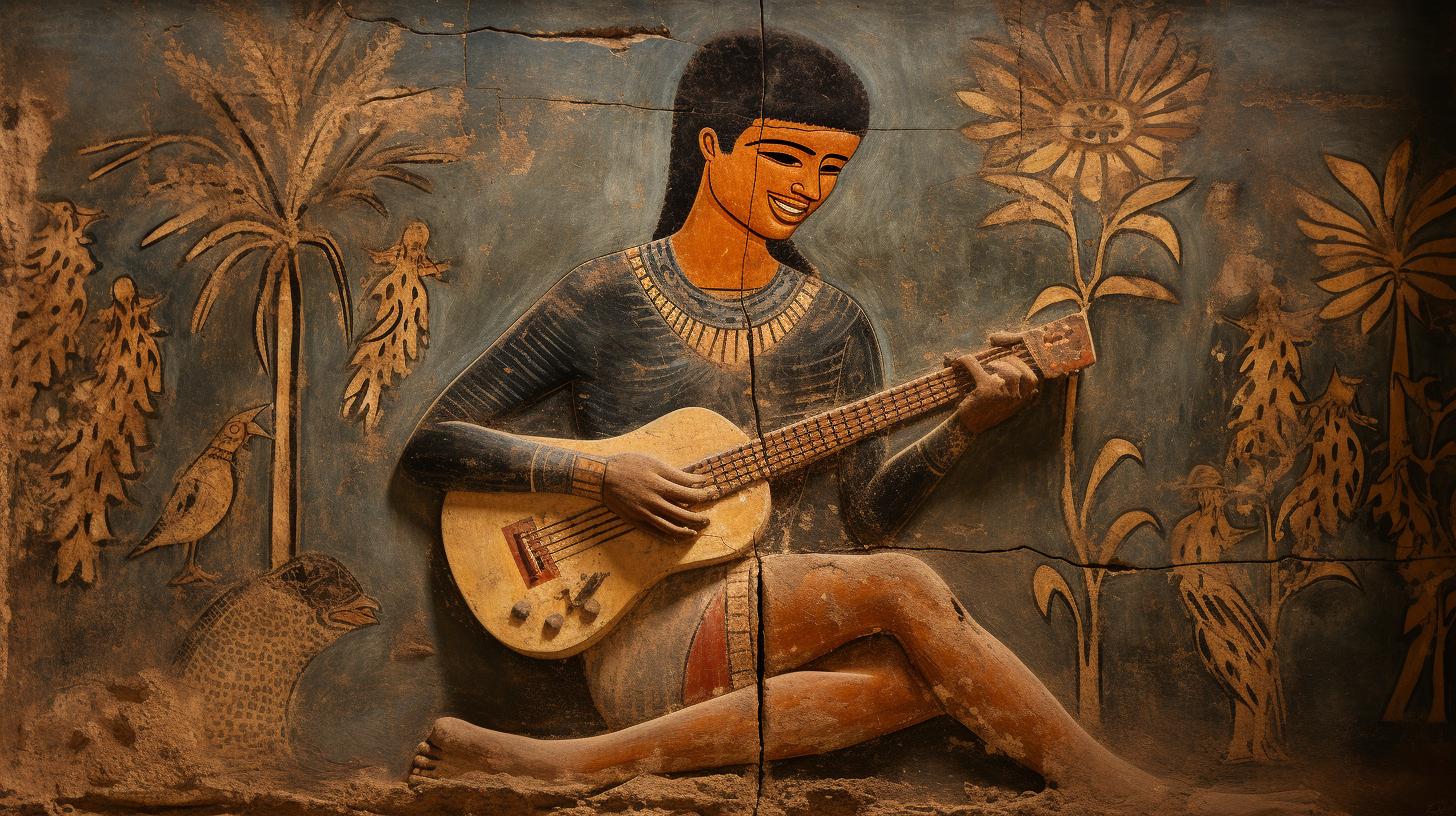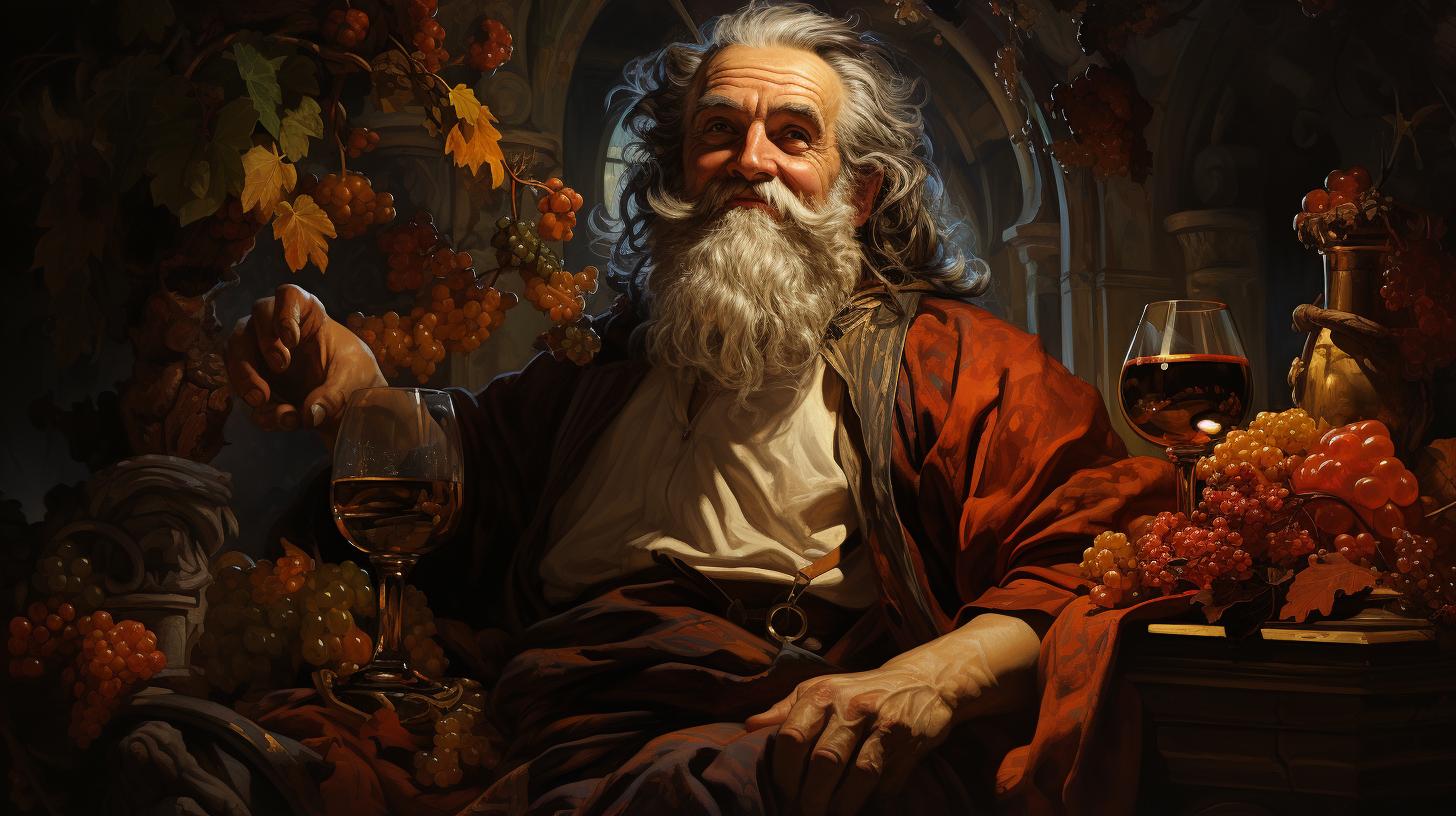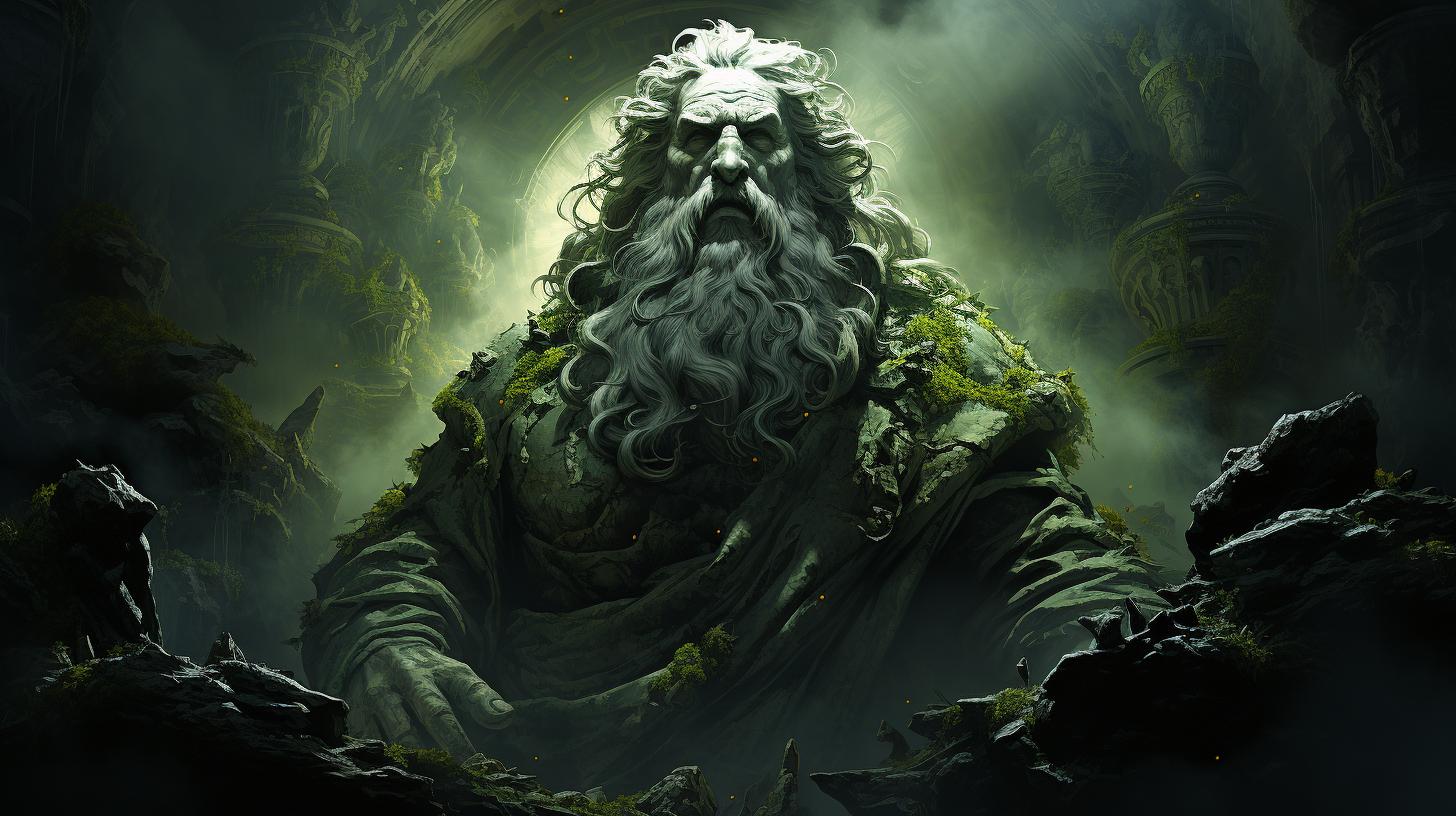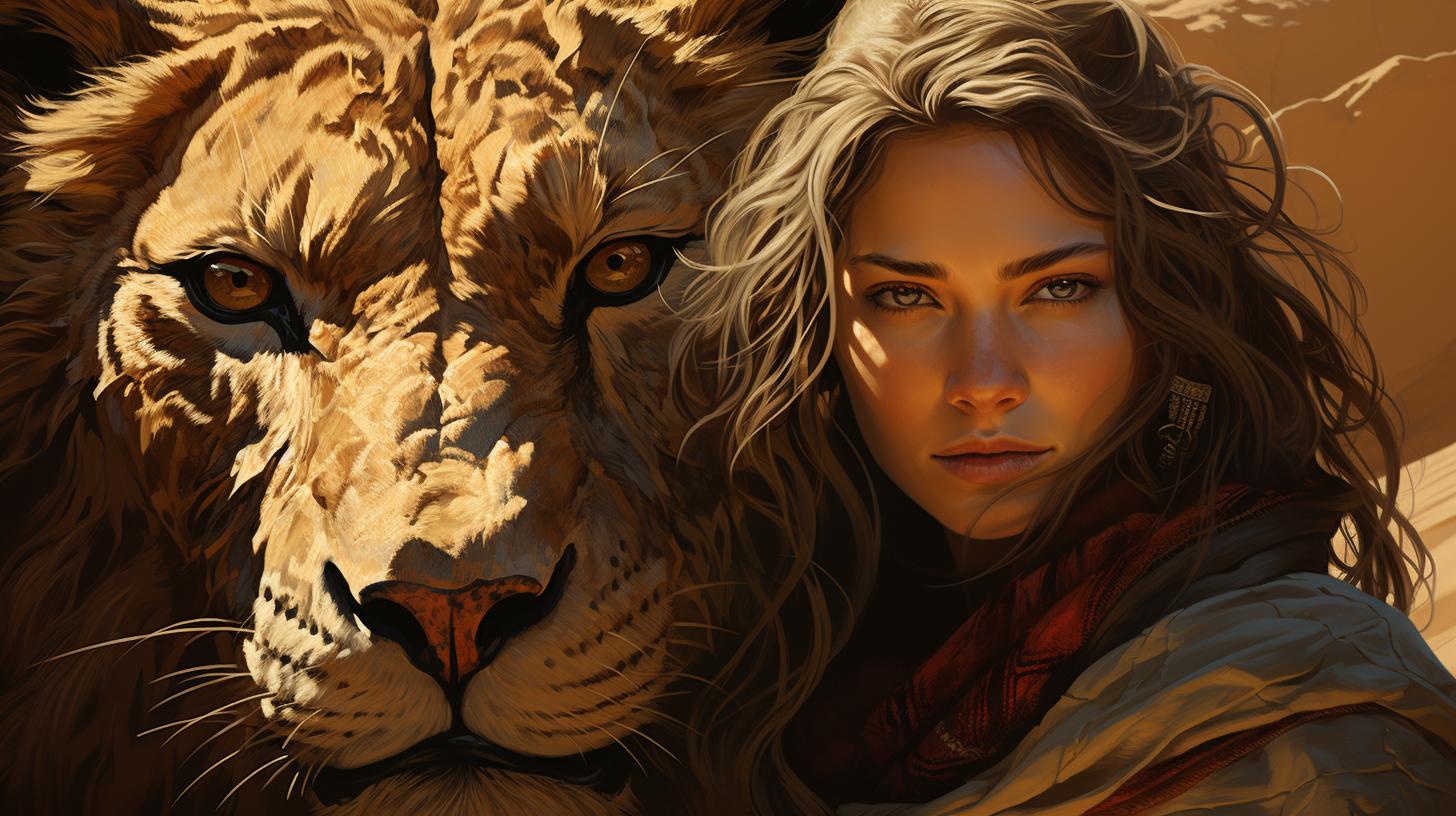Am-Heh Egyptian God: The Fierce Dog-Headed Deity of Ancient Egypt
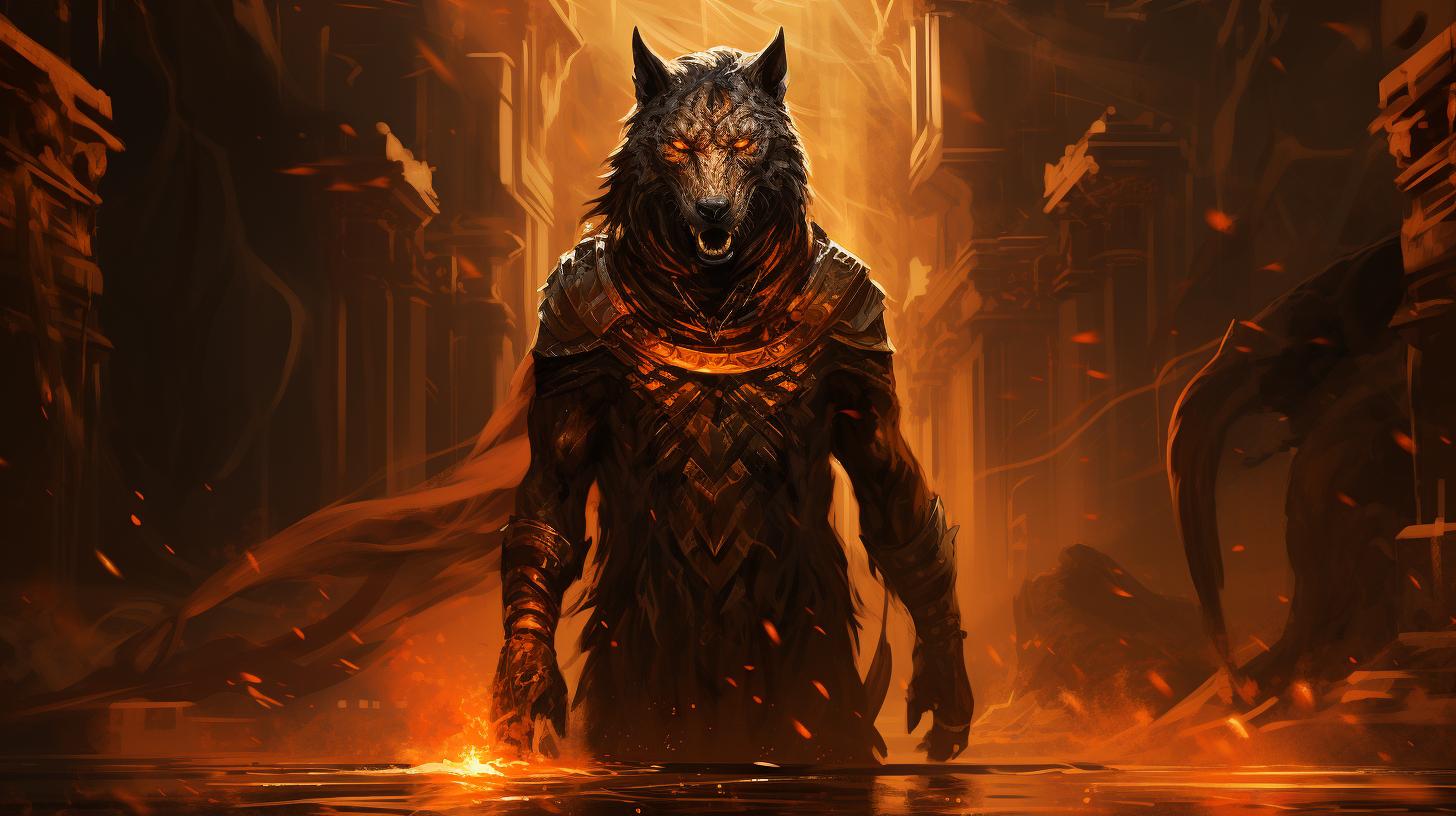
Am-Heh was a fierce ancient Egyptian god known as the “devourer of millions” among the Egyptian gods and goddesses. He had the head of a ferocious hunting dog and lived in a lake of fire.
While not worshipped, Am-Heh was feared for his interest in human flesh. In this article, we will explore the role of Am-Heh in ancient Egyptian mythology and religion, including his connections to other deities and his influence on modern culture.
Am-Heh in Ancient Egyptian Mythology
Am-Heh is one of the most enigmatic gods in ancient Egyptian mythology. He is known as the ‘devourer of millions’, a fierce hunter who lived in a lake of fire and had the head of a dog.
His primary role in ancient Egyptian mythology is not well-defined, but he is generally associated with destruction, punishment, and the devouring of the souls of the wicked. His connection to other gods and myths is also unclear, but he remains a fascinating and important figure in Egyptian mythology.
The Creation Myth and Am-Heh’s Role
In the Egyptian creation myth, the world was born from the primordial waters of chaos. The god Atum rose from that chaos and created Egypt and the gods. According to some versions of the myth, it was Am-Heh who guarded the source of the waters of chaos, preventing the universe from slipping back into primordial chaos.
Another version of the creation myth features a serpent named Apep, who sought to swallow the sun god, Ra, each day. It was said that Am-Heh would join with the other gods to fight and devour Apep, allowing Ra to rise again and bring light to the world.
Other Myths and Events Involving Am-Heh
Am-Heh is mentioned in several other myths and texts, although his role in them is often unclear. He is sometimes associated with the goddess Ammit, who devoured the hearts of the wicked in the afterlife.
In one myth, Am-Heh is said to have been present at the weighing of the heart ceremony, where it was decided whether a soul would be allowed to enter the afterlife or be devoured by Ammit.
However, it is unclear whether Am-Heh played an active role in this process.
Am-Heh is also mentioned in several spells from the Coffin Texts, a collection of ancient Egyptian funerary texts. In these spells, Am-Heh is sometimes identified as a defender of the sun god, Ra, or as a god of the underworld.
However, his exact role in these texts remains a matter of debate among scholars.
- Am-Heh is associated with destruction, punishment, and the devouring of the souls of the wicked.
- His primary role in ancient Egyptian mythology is not well-defined, but he is generally considered a feared and important figure.
- Am-Heh is associated with the guarding of the source of the waters of chaos, preventing the world from slipping back into chaos.
- Am-Heh is also associated with the fight against the serpent Apep, allowing the sun god Ra to rise again.
- Am-Heh is sometimes associated with the goddess Ammit, who devoured the hearts of the wicked in the afterlife.
- In the Coffin Texts, Am-Heh is sometimes identified as a defender of Ra or a god of the underworld.
Am-Heh’s Characteristics and Symbolism
Am-Heh, the ‘devourer of millions,’ was an intimidating figure in ancient Egyptian mythology due to his terrifying appearance and cannibalistic tendencies.
Am-Heh’s characteristics and symbolism played an important role in his representation as a deity.
The Head of a Fierce Dog: What Does It Represent?
One of Am-Heh’s most defining characteristics is his fierce dog-like appearance. The ancient Egyptians associated the dog with loyalty, tenacity, and protection. However, in the case of Am-Heh, his dog head takes on a very different meaning.
The dog symbolized death and the underworld, which is why Am-Heh’s head was said to represent the final fate of those who did not pass the judgment of the gods.
Am-Heh’s Connections to Other Deities like Ammit and Babi
Am-Heh has often been associated with other deities in ancient Egyptian mythology who also had a taste for human flesh. The most well-known of these deities is Ammit, the ‘devourer of the dead,’ who was said to consume the hearts of those who did not pass the judgment of the gods.
Am-Heh’s association with Babi, the baboon-headed god who was said to eat the entrails of the deceased, also highlights the cannibalistic themes in ancient Egyptian mythology.
Conclusion
Am-Heh’s characteristics and symbolism, particularly his dog head and cannibalistic tendencies, served to reinforce his role as a fearsome deity in ancient Egyptian mythology. His connections to other deities with similar appetites further emphasized the importance of the judgment of the gods in ancient Egyptian religion.
Am-Heh’s Role in Ancient Egyptian Religion
Am-Heh, the dog-headed god of ancient Egyptian mythology, played an important role in the religion of the time. Although he was not worshipped, his existence and characteristics were an essential part of the Egyptian belief system.
Understanding the nature of Am-Heh’s role helps to shed light on the wider context of religion and mythology in Ancient Egypt.
The Role of Maat: How Did Am-Heh Fit In?
In ancient Egypt, maintaining balance and order in the universe was critical. This concept was encapsulated in Maat, the goddess of truth and justice. Am-Heh played a role in the maintenance of maat by devouring those who had committed heinous crimes in life.
By doing so, he helped to prevent chaos from spreading throughout the universe.
Maat and Am-Heh are featured together frequently in ancient Egyptian texts. The Book of the Dead, for example, describes a scene in which a person’s heart is weighed against the feather of Maat.
If they are found to be free from sin, they are allowed to proceed to the afterlife. If their heart is heavy with sin, however, Am-Heh appears and devours it, preventing entry into the afterlife.
The Pharaoh’s Role and Connection to Am-Heh
The pharaoh of ancient Egypt was considered to be the embodiment of the gods on earth. Not only did he serve as a political leader, but he also played a crucial role in maintaining the order of the universe.
In this regard, the pharaoh had a direct connection to Am-Heh. It was his duty to oversee the application of justice and ensure that those who transgressed against maat were punished.
Many depictions of pharaohs show them standing or sitting in front of Am-Heh, as if overseeing his behavior. This emphasizes the pharaoh’s role as a mediator between the gods and the people of Egypt.
- Am-Heh’s primary role was to maintain balance in the universe by preventing chaos from spreading.
- Am-Heh was frequently featured alongside Maat, the goddess of truth and justice.
- The pharaoh of ancient Egypt had a role in maintaining maat and a direct connection to Am-Heh, as the embodiment of the gods on earth.
- Depictions of pharaohs often show them standing or sitting in front of Am-Heh, emphasizing their role as mediators between the gods and the people of Egypt.
Overall, Am-Heh played a critical role in the ancient Egyptian religion, ensuring that balance and order were maintained in the universe.
His associations with Maat and the pharaoh illustrate the wider context of ancient Egyptian mythology and religion, emphasizing the important role that the gods and the people of Egypt played in maintaining order and preventing chaos.
Am-Heh in Texts and Artifacts
Texts and artwork from ancient Egypt provide important insight into the role of Am-Heh in the culture and mythology of the time. Both references in written texts and depictions in artwork shed light on how Am-Heh was perceived and represented.
References in Ancient Egyptian Texts
Am-Heh is referenced in various ancient Egyptian texts, including The Book of the Dead and The Book of Caverns. In The Book of the Dead, Am-Heh is described as “the dweller in the lake of fire” and a “devourer of millions.”
.
.
.
.
.
The text indicates that he is a powerful deity with the ability to consume the souls of the wicked. The Book of Caverns describes a journey through the underworld and references Am-Heh as a demon who guards the fifth cavern.
Depictions of Am-Heh in Ancient Egyptian Art
Depictions of Am-Heh in ancient Egyptian art often show him as a dog-headed deity with a large stomach and protruding ribs. He is frequently depicted alongside other gods and demons, such as Anubis and Set, and his presence is often associated with acts of destruction or punishment.
Some depictions show Am-Heh with his mouth open, as if in the act of consuming souls.
- Ancient Egyptian texts such as The Book of the Caverns and The Book of the Dead reference Am-Heh as a powerful, feared deity.
- Depictions of Am-Heh in ancient Egyptian art often show him consuming or preparing to consume souls.
- Am-Heh is often depicted alongside other gods and demons, suggesting his importance in the mythology and religion of ancient Egypt.
- The dog-headed depiction of Am-Heh likely reflects the deity’s associations with hunting and consumption.
The representations of Am-Heh in ancient texts and artifacts provide valuable information about the fears and beliefs of ancient Egyptians regarding death and the afterlife.
These depictions showcase the importance of Am-Heh in the mythology and religion of ancient Egypt and the ways in which he was depicted in the culture of the time.
Am-Heh’s Legacy and Influence
Despite not being a widely worshipped god in ancient Egypt, Am-Heh has had a significant impact on the culture and mythology of the region.
The Influence of Am-Heh on Other Deities and Myths
- Am-Heh’s depiction as a dog-headed deity with a fierce appetite for human flesh is believed to have influenced the creation of the goddess Ammit, often depicted as part-lion, part-hippopotamus, and part-crocodile, who devours the hearts of the unworthy dead.
- Am-Heh’s appearance as a challenging figure that only Atum could defeat was also incorporated into the myth of Horus and Set’s battles, as well as the popular character Anubis, known as the god of embalming and the protector of the dead.
The Impact of Ancient Egyptian Mythology and Am-Heh on Modern Culture
Am-Heh and other ancient Egyptian deities have remained popular and influential figures in modern culture.
Their imagery has been incorporated into pop culture, literature, and art, both in Egypt and around the world. This impact can be seen in:
- The popularity of mummy and tomb-themed movies that often incorporate ancient Egyptian deities and mythology, with some featuring appearances from Am-Heh.
- The influence of ancient Egyptian art on modern artists and designers, with the use of hieroglyphs, iconic figures, and imagery present in fashion, jewelry, and other products.
- The continued fascination with ancient Egyptian mythology and its enduring legacy, with museums, exhibits, and tours that showcase ancient artifacts and provide insight into the lives and beliefs of the people who worshipped Am-Heh and other deities.
Overall, Am-Heh’s legacy has continued to influence Egyptian mythology and culture, as well as the world’s popular culture and artistic expression for centuries.
Despite being a lesser-known god, Am-Heh’s fierce appearance and appetite have made an indelible mark on the ancient world and beyond…..











